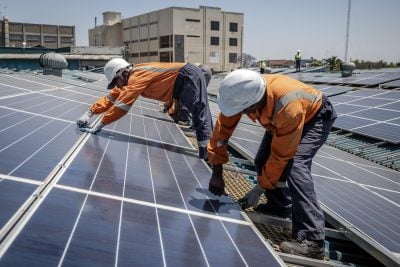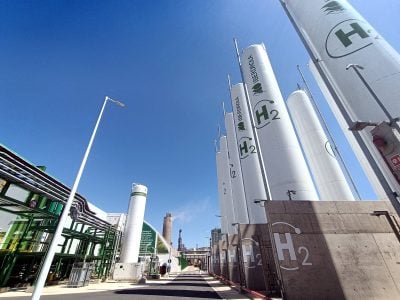The ecological benefits of hydropower and its capacity to generate a lot of electricity are contributing to a new boom in hydro schemes in Africa.
Given the criticism dam construction has attracted in recent years, it might seem surprising that a hydropower boom is currently taking place in Africa. Although vast headline-grabbing hydro schemes were in vogue across Sub-Saharan Africa in the decades following independence, the technology fell out of favour after the turn of the millennium.
Increasingly erratic rainfall patterns were resulting in fluctuating hydroelectric production at the continent’s dams. Meanwhile, the impact of dams and reservoirs, in terms of population displacement, loss of land and damage to local wildlife and environments, was being considered more seriously. The World Bank and several other multilaterals reduced their support for new large hydro schemes.
Those problems all still exist, but the climate change benefits of hydropower, together with the capacity to generate a lot of electricity, are now seen as sufficiently important to make it a worthwhile investment in the eyes of some governments and funding institutions.
As a result, a string of large projects, long planned but never developed, are now either under construction or being actively considered again.
Some hydro schemes actually produce substantial methane – a potent greenhouse gas – from rotting vegetable matter in the reservoir. But the amount is likely to vary project to project, and the technology is regarded as being, on balance, a means of tackling climate change, rather than causing it, analysts say.
However, the impact of climate change on rainfall patterns is forecast to be more extreme in southern and eastern Africa than almost anywhere else in the world – even if the American Geophysical Union forecasts higher overall rainfall in the Ethiopian Highlands. So banking on large-scale hydropower to solve power problems remains a risky business across the continent.
GERD – Africa’s biggest hydro project
The biggest hydro project on the continent by some distance is the Grand Ethiopian Renaissance Dam (GERD), which is being built on the Nile, just 15km from the border with Sudan. The dam is intended to create a reservoir holding 74bn cubic metres of water.
Its forecast generating capacity has been upgraded to 6.45 GW. But there has been some discussion that operating criteria could be changed in order to overcome opposition from Egypt and Sudan, which are concerned the project will adversely affect their water supply downstream.
Funding and engineering problems, together with the political controversy, have resulted in repeated delays to the construction schedule. At the time of writing, GERD was forecast to come onstream in 2021.
The process of filling the reservoir is scheduled to start in late 2020, although it remains to be seen whether talks with Egypt and Sudan over water management will be concluded by then.
It also seems likely that construction work could further delay it, as the project was reported to be only two-thirds complete in April 2019, and officials put the figure at just 72% as recently as April 2020.
Ethiopia’s hydro programme is not limited to the GERD. A series of other big projects have increased national generating capacity from 710 MW in 2005 to 4.65 GW today.
The most recent addition was the Genale Dawa III scheme in the southeast of the country which added 254 MW in February. The government hopes that the various schemes will turn Ethiopia into the biggest power exporter in Africa via a string of new cross-border transmission lines.
Mambilla inches forward
While many countries would like to develop wind, solar or thermal generating capacity to inject some diversification into generation mixes that are too dependent on hydro, Nigeria could be said to be moving in the opposite direction to some degree.
Successive governments banked on developing gas-fired plants to improve the country’s dire power supply situation, a strategy that has proved largely unsuccessful, in part due to gas supply problems. Now, Nigeria is looking again to hydro to help fill the supply-demand gap.
In February 2020, the country took one step closer to developing what would be Africa’s second biggest hydro project, when Minister of Power Sale Mamman, announced that a legal dispute that had held up the development of the 3.05 GW Mambilla scheme had been settled.
The government had to settle a claim from Sunrise Power, which had been given a contract to develop the project that was cancelled in 2007. The company has agreed to take $200m in compensation, according to media reports.
Mamman said that construction on the $5.8bn project is now due to begin before the end of this year. It is to be built on the Donga River in Taraba State, in the east of the country, and will require the construction of four dams. Exim Bank of China has reportedly agreed to provide loans to cover 85% of the funding.
China Civil Engineering Construction Corporation was selected as the main contractor on the revival of the venture in 2017, but could not start work until the legal action was completed.
The government has said surveys for the project have started and construction is expected to take six years, once it is underway.
Inga stuck on drawing board
Meanwhile, efforts to tap further hydro potential offered by the long-mooted Inga hydropower developments on the lower reaches of the Congo river in Democratic Republic of Congo remain bogged down. Part of the problem is the sheer scale of envisaged projects in relation to the tiny size of the domestic market of the impoverished DRC, and the area’s isolation from larger markets.
A number of projects mooted for Inga could produce more than 40 GW of power, if they all got off the ground – nearly double the capacity of the world’s biggest existing hydro scheme, the 22.5 GW Three Gorges Dam in China. They are envisaged as mainly run-of-the-river projects and so would involve less dam-building than reservoir-based projects.
That sort of capacity means most of the power would need to be exported from this remote and under-developed region. South Africa would be an obvious market, but getting the power there remains far from straightforward.
The most likely development to get off the ground could be the 10 GW Inga III project, from which the South African government has said it would take power. But Spanish contractor ACS reportedly pulled out of the project in January 2020, having signed a preliminary agreement with Chinese firms Sino Hydro and Three Gorges in 2018 to develop the scheme.
The partners were apparently been unable to agree a development plan.
Congolese officials expect the Chinese companies to pursue the project alone and to finance construction independently, without direct investment by Kinshasa.
Elsewhere, work began on the 2.1 GW Rufiji scheme at Stiegler’s Gorge in Tanzania last July, although it has been controversial because it lies at the heart of one of the biggest and most remote wildlife reserves in Africa, the Selous Game Reserve.
The $1.38bn project will provide generating capacity of 2.12 GW and is being developed by two Egyptian firms, JV Arab Contractors Company and Elsewedy Electric Company. It is due to come on stream in 2022, which would be a fast turnaround for a project on this scale.
Want to continue reading? Subscribe today.
You've read all your free articles for this month! Subscribe now to enjoy full access to our content.
Digital Monthly
£8.00 / month
Receive full unlimited access to our articles, opinions, podcasts and more.
Digital Yearly
£70.00 / year
Our best value offer - save £26 and gain access to all of our digital content for an entire year!
 Sign in with Google
Sign in with Google 



